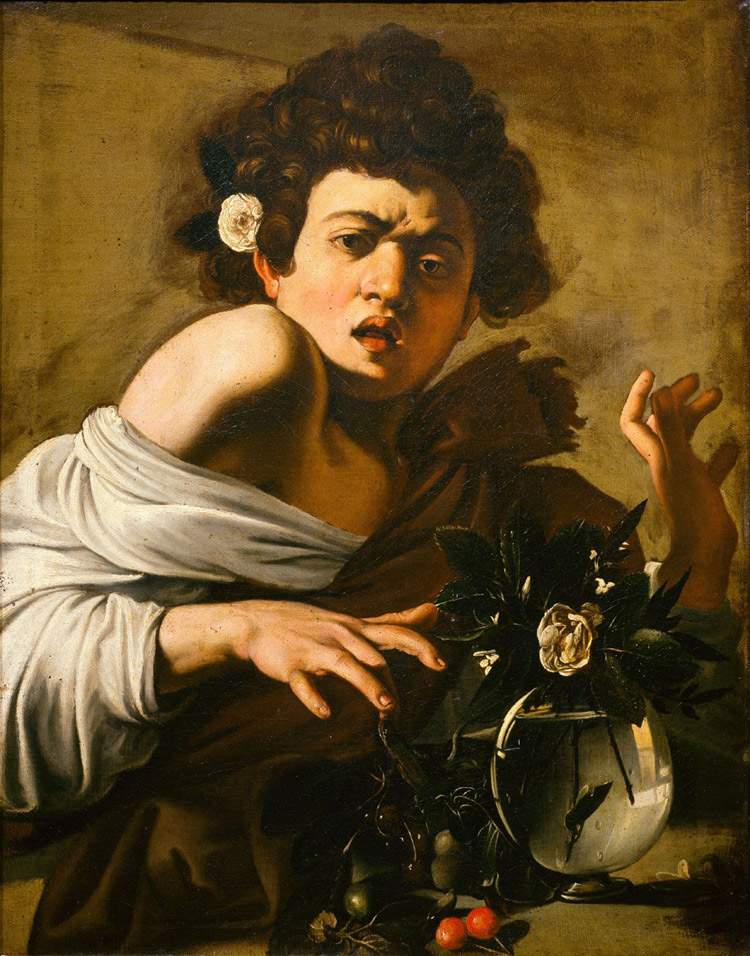In Rome, Caravaggio and other artists of his time are on display at Palazzo Caffarelli
On until September 13 is Il tempo di Caravaggio, the exhibition on display in Rome in the spaces of Palazzo Caffarelli where it is possible to admire Caravaggio ’s Ragazzo morso da un ramarro (Boy bitten by a lizard ) and more than forty paintings from Roberto Longhi’s collection of artists who were influenced to varying degrees by his figurative revolution in the 17th century.
The exhibition, curated by Maria Cristina Bandera scientific director of the Longhi Foundation, is dedicated to the collection of Caravaggio paintings of the great art historian and collector Roberto Longhi (Alba, 1890 - Florence, 1970), whose 50th anniversary of his death falls in 2020. In his Florentine home, Villa Il Tasso, now the headquarters of the Foundation named after him, he collected a considerable number of works by masters of all periods that were an occasion for him to research. Among these, the most relevant and significant nucleus is undoubtedly the one that includes the works of Caravaggio and his followers. The art historian devoted himself to the study of Caravaggio, at the time one of the “least known painters of Italian art,” as early as his graduation thesis, discussed with Pietro Toesca, at theUniversity of Turin in 1911. A pioneering choice, which nevertheless shows how the young Longhi was able to recognize the revolutionary scope of Merisi’s painting right away, so that he understood him as the first painter of the modern age.
The Ragazzo morso da un ramarro (Boy Bitten by a Lizard), which dates from the beginning of Caravaggio’s Roman sojourn and can be dated to around 1596-1597, is striking first and foremost for its rendering of the abrupt jerk due to physical pain and surprise, which are expressed in the contraction of the boy’s facial muscles and the contortion of his shoulder. But also for the “diligence” with which the painter rendered the still life piece with the transparent jug and flowers, as Giovanni Baglione pointed out as early as 1642.
On display in the introductory room, dedicated to the figure of Roberto Longhi and the Foundation he established, is a charcoal drawing of only the figure of the boy, drawn by Roberto Longhi himself, who affixed his signature and the date 1930. It is a d’après, from the almost life-size sheet, which not only demonstrates the art historian’s skill as a draughtsman, but more importantly attests to his perfect understanding of the luminous organization of the painting he had before his eyes.
Next are paintings by the artists who throughout the 17th century were influenced by his figurative revolution. These include three canvases by Carlo Saraceni; theAnnouncing Angel by Guglielmo Caccia known as Il Moncalvo; the penitent Mary Magdalene by Domenico Fetti; the splendid Coronation of Thorns by Pier Francesco Mazzucchelli, known as Il Morazzone; and theAllegory of Vanity, one of Angelo Caroselli’s most significant works.
Four tablets by Lorenzo Lotto and two paintings by Battista del Moro and Bartolomeo Passarotti open the exhibition with the intention of representing the artistic climate of Lombard and Venetian Mannerism in which Caravaggio was formed. On display is The Boy Peeling a Fruit, an early copy from Caravaggio, which Longhi considered a “relic,” so much so that he exhibited it at the epochal Palazzo Reale exhibition in Milan in 1951.
Also among the great masterpieces of early Caravaggism are five canvases depicting Apostles by the young Jusepe de Ribera and the Deposition of Christ by Battistello Caracciolo, among Caravaggio’s early Neapolitan followers.
The Denial of Peter is then the great masterpiece by Valentin de Boulogne, recently exhibited at the Metropolitan Museum of Art in New York and the Louvre Museum in Paris, whose setting is a precise reference to Caravaggio’s famous Vocation of St. Matthew in the Roman church of San Luigi dei Francesi. Also featured with notable works are Flemish and Dutch artists such as Gerrit van Honthorst, Dirck van Baburen, and especially Matthias Stom.
Also notable are works by two painters of uncertain identity, known as Master of the Emmaus of Pau and Master of the Announcement to the Shepherds, as well as two small but significant landscapes by Viviano Codazzi and Filippo Napoletano.
Other great artists include the Genoese Bernardo Strozzi, Giovanni Andrea De Ferrari, and Gioacchino Assereto. Also: Andrea Vaccaro, Giovanni Antonio Molineri, Giuseppe Caletti, Carlo Ceresa, Pietro Vecchia, Francesco Cairo and Monsù Bernardo.
Two masterpieces by Mattia Preti - the artist who more than any other contributed to maintaining the vitality of the Caravaggesque tradition until the end of the 17th century - and two beautiful canvases by Giacinto Brandi, with which the exhibition concludes, belong to a later season.
The exhibition is accompanied by a catalog produced by Marsilio Editori that presents the works of Caravaggio and his followers in the Longhi Collection, accompanied by a card and a brief biography of the artists.
For all information you can visit the official website of the Capitoline Museums.
Image: Michelangelo Merisi known as Caravaggio, Ragazzo morso da un ramarro (c. 1595-1596; oil on canvas, 65.8 x 52.3 cm; Florence, Fondazione Longhi)
 |
| In Rome, Caravaggio and other artists of his time are on display at Palazzo Caffarelli |
Warning: the translation into English of the original Italian article was created using automatic tools. We undertake to review all articles, but we do not guarantee the total absence of inaccuracies in the translation due to the program. You can find the original by clicking on the ITA button. If you find any mistake,please contact us.





























